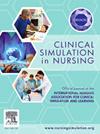使用医疗保健模拟最佳实践标准(HSSOBPTM)设计和实现数字药物优化模拟(SimMed)
IF 2.5
3区 医学
Q1 NURSING
引用次数: 0
摘要
药物优化需要医疗保健专业人员开发和维护安全的药物管理技能,并协同工作。早期接触跨专业学习对护理学生发展这些能力至关重要。作为回应,我们开发了SimMed,一个专注于药物安全的跨专业数字模拟。虽然数字模拟越来越被认为是一种有效的教育方法,但其设计往往缺乏一致性和严谨性。本文介绍了SimMed在医疗保健教育环境中的发展和初步实施。方法以最佳实践医疗模拟标准(HSSOBPTM)和敏捷方法为基础,开发、实施和试点预注册护理学生的SimMed模拟。结果该模拟系统开发成功,并向130名学生进行了培训。它价格实惠,用户友好,并且具有互动性。其灵活的设计有助于实现学习目标和提高学生的学习。关键的见解包括使用标准框架、迭代设计和用户反馈集成的价值。结论HSSOBPTM和敏捷原理的应用支持了药物优化教学仿真工具的结构化、迭代开发和成功实施。本文章由计算机程序翻译,如有差异,请以英文原文为准。
Design and implementation of a digital medication optimization simulation (SimMed) using healthcare simulation standards of best practiceTM (HSSOBPTM)
Background
Medicines optimization requires healthcare professionals to develop and maintain safe medicine management skills and work collaboratively. Early exposure to interprofessional learning is essential for nursing students to develop these competencies. In response, we developed SimMed, an interprofessional digital simulation focused on medication safety. While digital simulation is increasingly recognized as an effective educational approach, its design often lacks consistency and rigor. This paper presents the development and initial implementation of SimMed within a healthcare education setting.
Method
The Healthcare Simulation Standard of Best PracticeTM (HSSOBPTM) and Agile methodology underpinned the development, implementation, and piloting of the SimMed simulation for preregistration nursing students.
Result
The simulation was successfully developed and delivered to 130 students. It was affordable, user-friendly, and interactive. Its flexible design facilitated achieving learning objectives and enhanced student learning. Key insights included the value of using a standard framework, iterative design, and integration of user feedback.
Conclusion
The application of HSSOBPTM and Agile principles supported the structured, iterative development and successful implementation of an effective and scalable simulation tool for medicines optimization education.
求助全文
通过发布文献求助,成功后即可免费获取论文全文。
去求助
来源期刊

Clinical Simulation in Nursing
NURSING-
CiteScore
5.50
自引率
15.40%
发文量
107
期刊介绍:
Clinical Simulation in Nursing is an international, peer reviewed journal published online monthly. Clinical Simulation in Nursing is the official journal of the International Nursing Association for Clinical Simulation & Learning (INACSL) and reflects its mission to advance the science of healthcare simulation.
We will review and accept articles from other health provider disciplines, if they are determined to be of interest to our readership. The journal accepts manuscripts meeting one or more of the following criteria:
Research articles and literature reviews (e.g. systematic, scoping, umbrella, integrative, etc.) about simulation
Innovative teaching/learning strategies using simulation
Articles updating guidelines, regulations, and legislative policies that impact simulation
Leadership for simulation
Simulation operations
Clinical and academic uses of simulation.
 求助内容:
求助内容: 应助结果提醒方式:
应助结果提醒方式:


